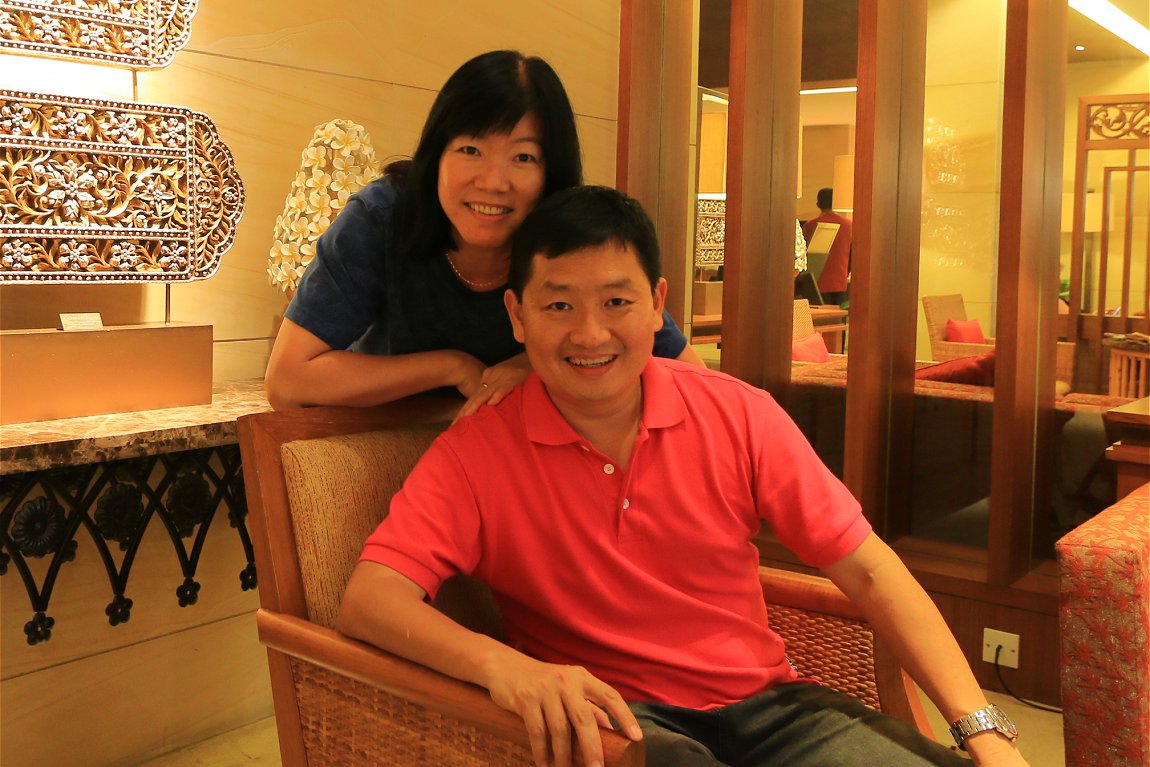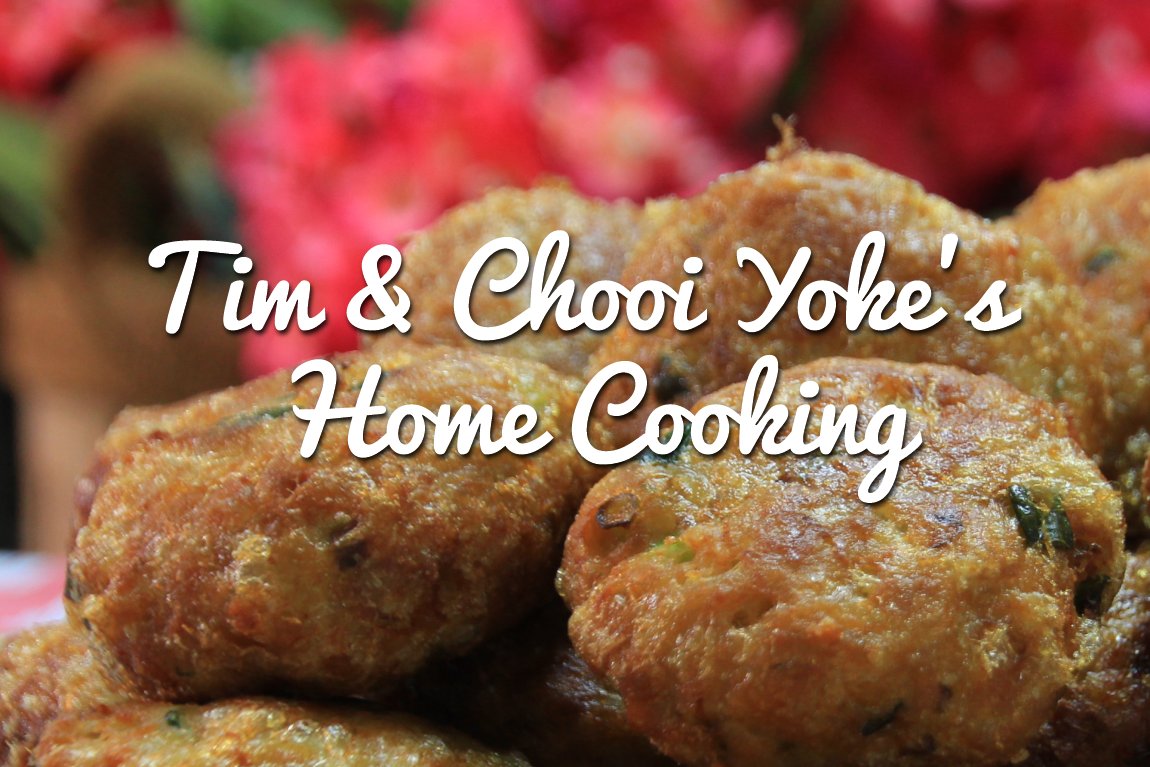
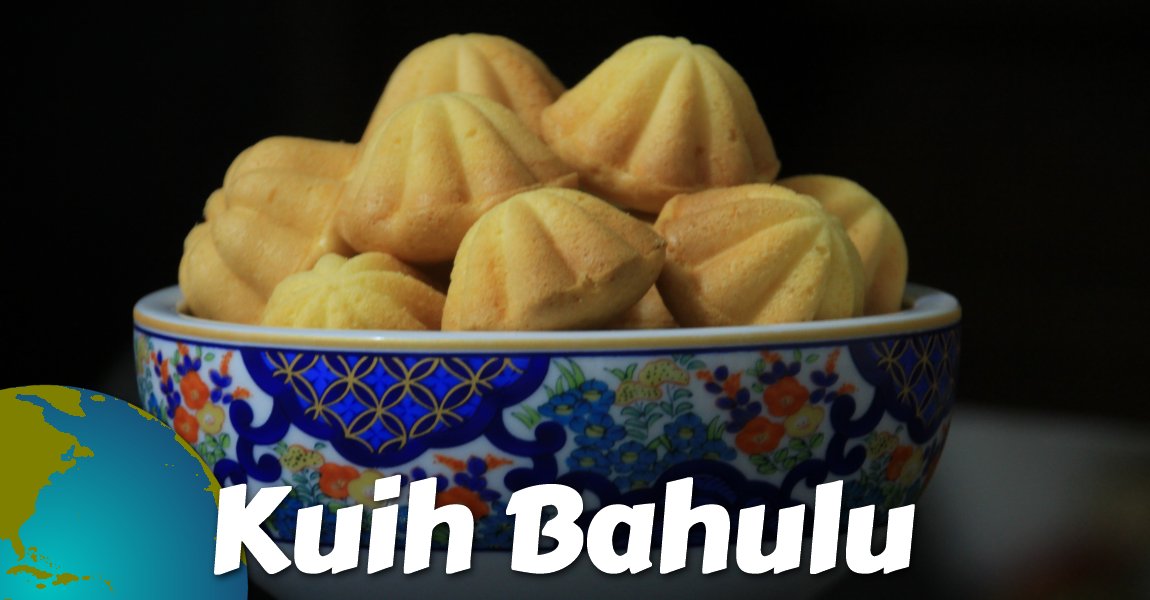 Kuih Bahulu (22 January 2014)
Kuih Bahulu (22 January 2014)
Kuih Bahulu 鸡蛋糕 is a popular Nyonya kuih in Penang. It is often known as the Malaysian madeleine, and in Chinese, the name 鸡蛋糕 means chicken cakes. In Penang, it is known in Penang Hokkien as kuih3 bu3lu1
 .
.I was not fond of kuih bahulu until I tasted the ones made by my wife. That's because the kuih bahulu that I had tasted before were soft and uninteresting. When my wife announced that she was going to make this kuih, I greeted the idea with yawning indifference. And then she showed me how delicious kuih bahulu can be. When freshly made, the kuih is hot, and has a very crispy outer layer that encases a soft inside. And it smelled so good. That's when I realised that I had judged kuih bahulu based on bad experience, and when done right, it could be very tasty.
Ingredients for Kuih Bahulu
We use a bowl as a measuring agent, so get any bowl of your choice - the size will determine how many of the kuih you will be making.- 1 bowl of eggs
- 1 bowl of sugar
- 1 bowl of wheat flour
- Some oil for brushing the mould
Equipment and Utensils for Kuih Bahulu
- Kuih Bahulu mould
- Wok
- Mixing Bowl
- Bowl
- Oven
- Chopsticks, spoon
Steps for making Kuih Bahulu
- Lightly fry the flour in a wok over low flame until the flour is light (this takes about 20 minutes). Once you notice that the flour has becoming light, dish out and spread in a flat pan for it to cool down. Sieve and set aside.
- Switch on the oven to 200°C and heat up the bahulu mould.
- Put the eggs and sugar in a mixing bowl and beat until the batter is thick. If you can make a figure 8 and the 8 is not disappearing for many seconds, then the batter is ready.
- Dish out a few scoops of the batter into another bowl, and add in the fried flour bit by bit. Fold the mixture as to not break the air bubbles or deflate the batter. The batter is ready when it can flow down in ribbon style, like when you pour out the sweetened condensed milk.
- Remove the mould from the oven and oil the surface of the pattern. You can tie a piece of cloth on the end of a chopstick and use as a brush to oil the mould. The mould must be hot when you pour in the batter. If the mould has become cold, put it back into the oven to reheat. Cold mould will cause your kuih bahulu to stick in it.
- Using a spoon, scoop the batter and fill the mould, about 80 percent full, as the batter will rise when baked. Bake until the top has turned golden brown. Take out and remove the kuih with a cake tester or satay stick.
- Oil the mould again, reheat and repeat the process until all the batter is used.
- Leave the kuih bahulus to cool, and then store them in an air tight container.
- Enjoy these crispy on the outside and soft inside kuih bahulu with a cup of black coffee. Yummy.
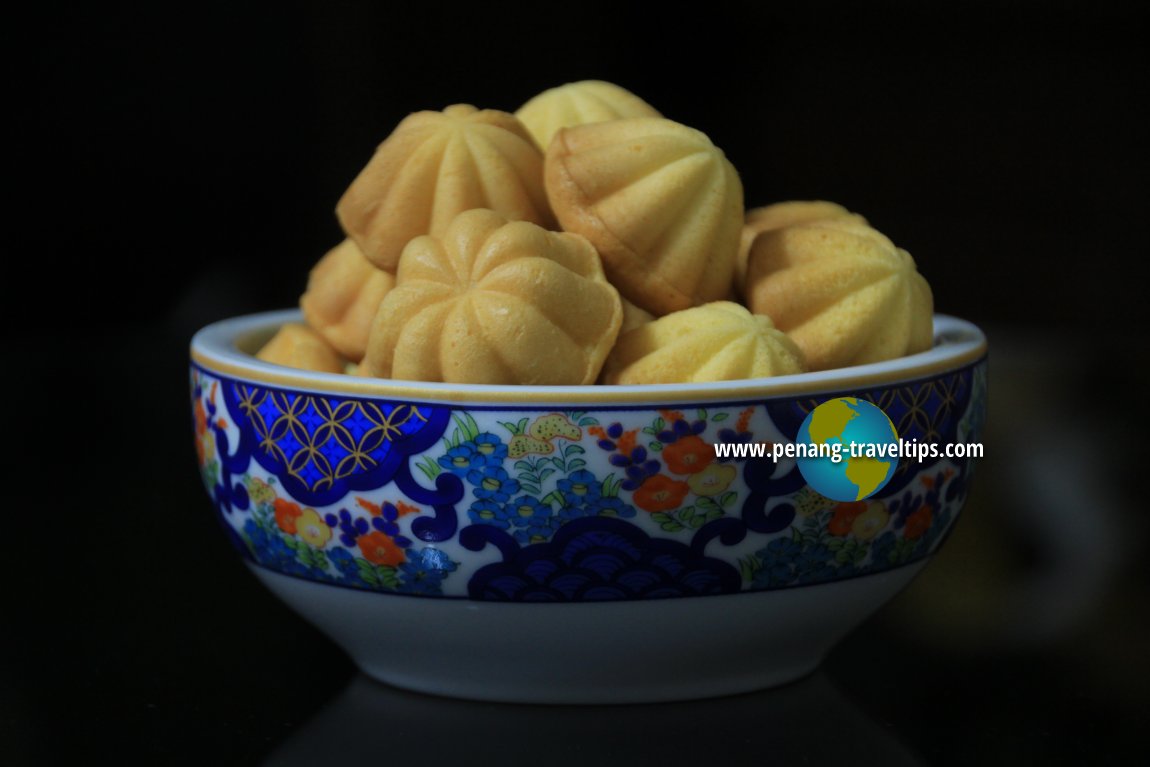 Kuih Bahulu (22 January 2014)
Kuih Bahulu (22 January 2014)
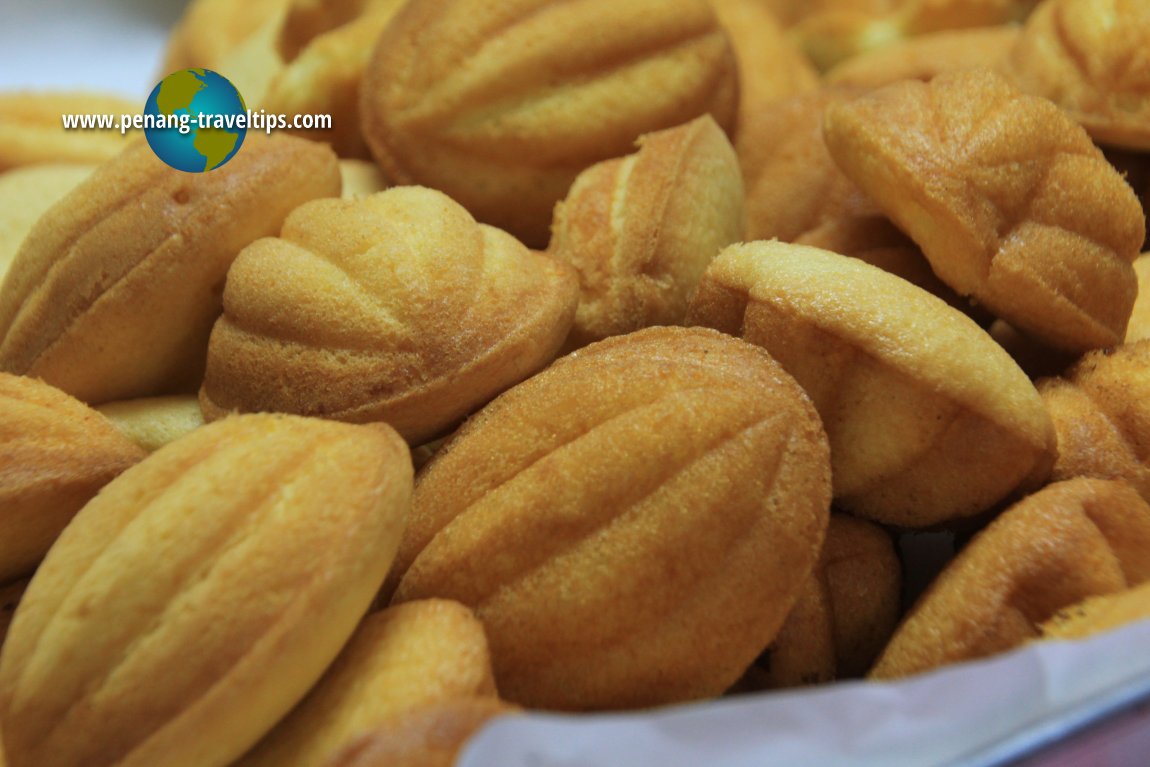 Kuih Bahulu (23 January 2017)
Kuih Bahulu (23 January 2017)
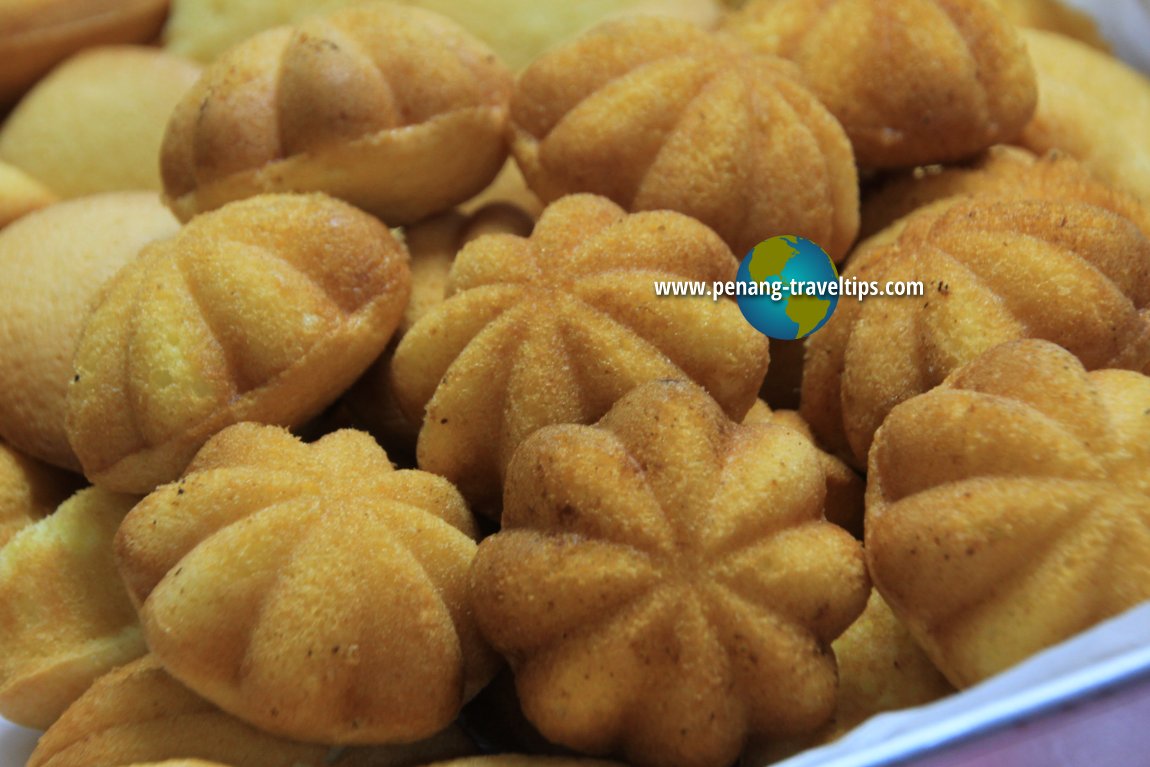 Kuih Bahulu (23 January 2017)
Kuih Bahulu (23 January 2017)
Tim & Chooi Yoke's Recipes of Homecooked Food
Let us share our recipes of homecooked food with you.Details
About this website

Dear visitor, thank you so much for reading this page. My name is Timothy Tye and my hobby is to find out about places, write about them and share the information with you on this website. I have been writing this site since 5 January 2003. Originally (from 2003 until 2009, the site was called AsiaExplorers. I changed the name to Penang Travel Tips in 2009, even though I describe more than just Penang but everywhere I go (I often need to tell people that "Penang Travel Tips" is not just information about Penang, but information written in Penang), especially places in Malaysia and Singapore, and in all the years since 2003, I have described over 20,000 places.
While I try my best to provide you information as accurate as I can get it to be, I do apologize for any errors and for outdated information which I am unaware. Nevertheless, I hope that what I have described here will be useful to you.
To get to know me better, do follow me on Facebook!
Copyright © 2003-2025 Timothy Tye. All Rights Reserved.

 Go Back
Go Back